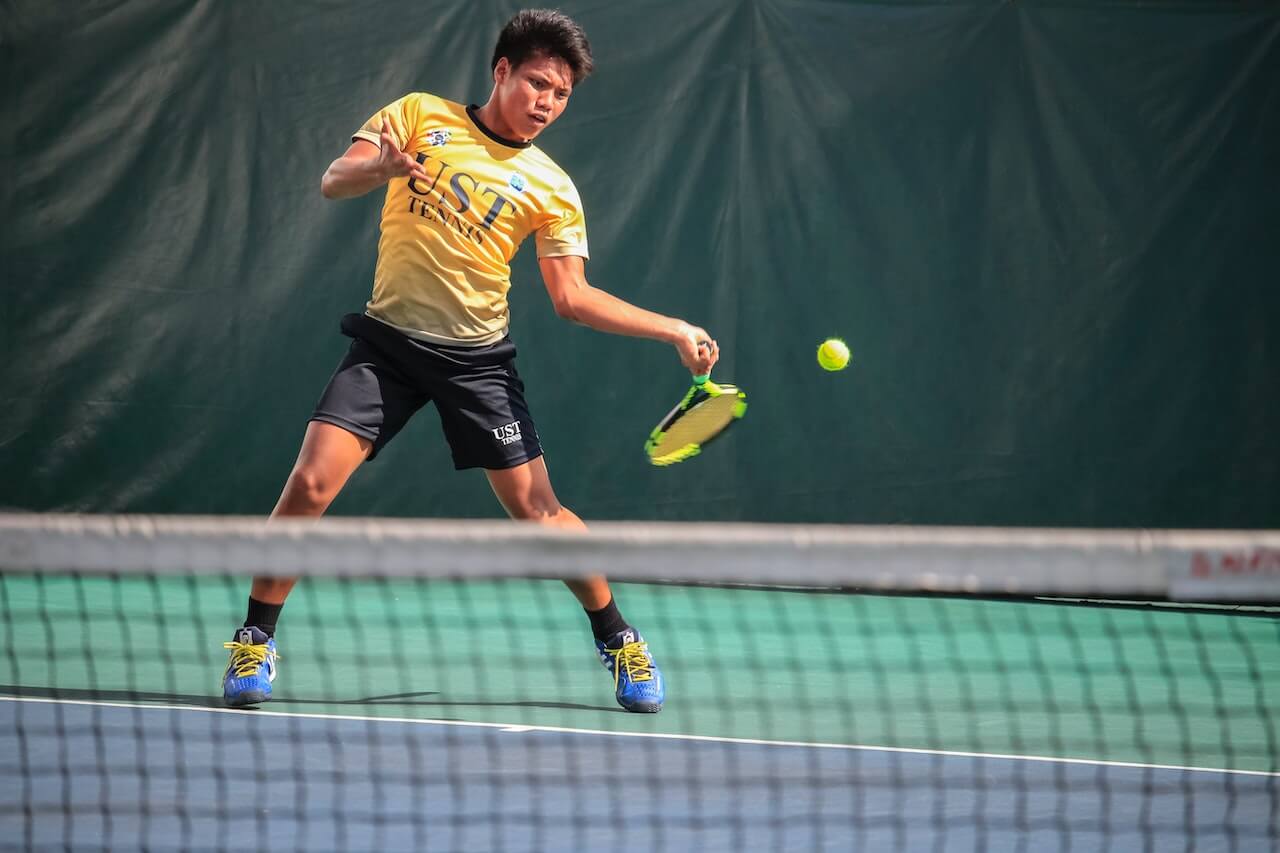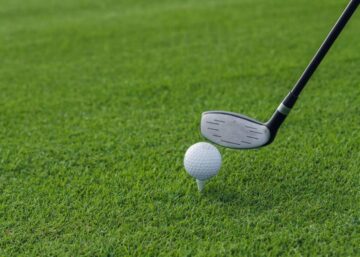If you’re looking for an exciting and challenging sport to play, tennis is a great option. Whether you’re a beginner or an experienced player, tennis can provide a fun and competitive workout. In this article, we’ll go over the basics of how to play a tennis game, from the equipment you’ll need to the rules of the game.
The first step in playing tennis is to gather the necessary equipment. You’ll need a tennis racket, tennis balls, and appropriate footwear. When choosing a racket, consider your skill level, playing style, and personal preferences. Tennis balls come in different types, such as pressurized and non-pressurized, and are also available in different colors. Proper footwear is important for preventing injuries and providing support and stability on the court.
Once you have your equipment, it’s time to learn the rules of the game. Tennis can be played individually or with a partner, and the objective is to hit the ball over the net and into the opponent’s court. Points are earned when the opponent fails to return the ball, and the first player to reach a certain number of points (usually 6 or 7) wins the game. In the next section, we’ll go over the basic techniques and strategies for playing tennis.
Equipment Needed
Playing tennis requires a few essential pieces of equipment to get started. Here is a list of the necessary items:
- Tennis racket
- Tennis balls
- Tennis shoes
- Tennis clothes
The most important piece of equipment is the tennis racket. It is essential to choose a racket that is comfortable to hold and suits your playing style. Rackets come in different sizes, weights, and materials, so it is important to try out a few before making a purchase.
Tennis balls are also necessary for playing the game. It is recommended to have at least three balls on hand, as they tend to get lost or damaged during play. Look for balls that are designed for tennis and have a consistent bounce.
Tennis shoes are another important piece of equipment. They provide the necessary support and traction needed to move quickly and efficiently on the court. Look for shoes that are specifically designed for tennis and fit comfortably.
Lastly, wearing appropriate tennis clothes can make a big difference in your comfort and performance on the court. Look for clothes that are breathable, moisture-wicking, and allow for a full range of motion.
Basic Rules of Tennis
If you’re new to tennis, it’s important to understand the basic rules of the game. Here are some key rules to keep in mind:
- Each player starts on opposite sides of the net, and the player who serves the ball must stand behind the baseline on their side of the court.
- The server must hit the ball into the opposite service box, and the ball must bounce once in the service box before the receiver can return it.
- Players take turns serving the ball, and each game consists of a series of points. The first player to win four points wins the game, but they must win by a margin of two points.
- If the game is tied at 40-40, it’s called “deuce,” and the players must win two consecutive points to win the game.
- A match consists of the best of three or five sets, depending on the tournament. To win a set, a player must win six games, again with a margin of two games. If the set is tied at 6-6, a tiebreaker is played to determine the winner of the set.
These are just some of the basic rules of tennis, but they should give you a good understanding of how the game is played. As you play more and watch professional matches, you’ll become more familiar with the nuances of the sport and the various strategies that players use to win points and games.
Serving
When it comes to tennis, serving is one of the most important aspects of the game. A good serve can give you an advantage over your opponent and set the tone for the rest of the match. Here are a few tips to help you improve your serve:
1. Start with the right grip: The grip you use on your racket can make a big difference in the power and accuracy of your serve. Most players use either the Eastern or Continental grip for their serve. Experiment with both to see which one feels best for you.
2. Use your legs: A strong serve requires a lot of power from your legs. Make sure to use your legs to generate the power you need to get the ball over the net and into the right spot on the court.
3. Toss the ball correctly: The toss is an important part of the serve. Make sure to toss the ball high enough so that you can hit it at the right angle. A good toss will also help you generate more power on your serve.
4. Follow through: After you hit the ball, make sure to follow through with your swing. This will help you generate more power and accuracy on your serve.
Remember, practice makes perfect when it comes to serving. Spend some time working on your serve every time you hit the court, and you’ll see improvement in no time!
Forehand and Backhand Strokes
When it comes to playing tennis, mastering the forehand and backhand strokes is essential. These two strokes are the foundation of any tennis game, and they will help you hit the ball with power and accuracy.
Let’s start with the forehand stroke. To perform a forehand stroke, you need to stand with your feet shoulder-width apart and your knees slightly bent. Hold the racket with both hands, and make sure your dominant hand is on top. As the ball approaches, step forward with your non-dominant foot and swing the racket forward in a sweeping motion, making contact with the ball in front of your body. Follow through with your swing, and aim to hit the ball with the center of the racket.
Now, let’s move on to the backhand stroke. To perform a backhand stroke, you need to stand with your feet shoulder-width apart and your knees slightly bent. Hold the racket with both hands, and make sure your dominant hand is on the bottom. As the ball approaches, step forward with your dominant foot and swing the racket back and across your body, making contact with the ball on the opposite side of your body. Follow through with your swing, and aim to hit the ball with the center of the racket.
Remember to keep your eye on the ball at all times, and to use your non-dominant hand to help guide the racket. With practice, you’ll be able to hit powerful and accurate forehand and backhand strokes that will help you dominate on the court.
Volleys and Smashes
If you want to be a skilled tennis player, you need to master the art of volleys and smashes. These shots are essential for winning points and can help you take control of the game. In this section, we’ll discuss the basics of volleys and smashes and how to execute them effectively.
Volleys are shots that are hit before the ball bounces on the court. They require quick reflexes and good hand-eye coordination. To execute a volley, you need to be in a good position near the net, with your racket up and ready to strike. When the ball comes towards you, use a short, compact swing to hit it back over the net. Keep your eyes on the ball and follow through with your shot.
Smashes, on the other hand, are shots that are hit overhead with a lot of power. They are typically used when the ball is high in the air or when your opponent hits a weak lob. To execute a smash, you need to be in a good position near the net, with your racket up and ready to strike. As the ball comes towards you, move into position and jump up to meet it. Use a strong, overhead swing to hit the ball down into your opponent’s court.
When executing volleys and smashes, it’s important to keep your body balanced and your eyes on the ball. You should also be prepared to move quickly and adjust your position as needed. With practice, you’ll be able to execute these shots with ease and take your game to the next level.
Footwork and Movement
When playing tennis, your footwork and movement are crucial to your success on the court. Proper footwork and movement can help you get to the ball faster and more efficiently, allowing you to hit better shots and win more points. Here are a few tips to help you improve your footwork and movement:
- Stay on the balls of your feet: This will help you move quickly in any direction.
- Take small, quick steps: This will allow you to change direction quickly and maintain your balance.
- Keep your weight forward: This will help you move forward and get to the ball faster.
- Use a split step: This involves jumping up and landing with your feet shoulder-width apart as your opponent hits the ball. This will help you react quickly to the ball and move in the right direction.
- Move with a purpose: Always move with a specific goal in mind, whether it’s to get to the ball or to position yourself for the next shot.
Remember, footwork and movement are skills that can be developed with practice. By focusing on these areas and incorporating these tips into your game, you can improve your overall performance on the court.
Scoring
Scoring in tennis can be a bit confusing for beginners, but it’s actually quite simple once you get the hang of it. A tennis match is typically played in sets, and each set is made up of games. To win a set, you must win at least six games and be ahead by at least two games. If the score is tied at 6-6, a tiebreaker is played to determine the winner of the set.
Each game is made up of points, and the first player to win four points wins the game. However, the scoring system used in tennis is a bit different from other sports. Instead of simply counting the number of points you win, you must also keep track of whether you are serving or receiving.
When you are serving, the score is called out in this order: love (0 points), 15 (1 point), 30 (2 points), 40 (3 points), and game (4 points). If both players are tied at 40-40, it’s called deuce. From deuce, the next player to win a point gets the advantage. If the player with the advantage wins the next point, they win the game. If they lose the next point, the score goes back to deuce.
When you are receiving, the score is called out in the reverse order: love, 15, 30, 40, and then advantage if the score is tied at deuce. If the player with the advantage wins the next point, they win the game. If they lose the next point, the score goes back to deuce.
Strategy and Tactics
Playing tennis requires not only physical ability but also strategic thinking. You need to have a game plan and be able to adjust it based on your opponent’s strengths and weaknesses. Here are some tactics and strategies to help you improve your game:
1. Serve Placement: Your serve is one of the most important shots in tennis. Try to vary your serve placement to keep your opponent guessing. Aim for the corners of the service box to make it harder for them to return.
2. Net Play: Net play can be a great way to put pressure on your opponent. If you have a good volley, try to approach the net after a strong shot and put away the ball with a well-placed volley.
3. Groundstroke Placement: When hitting groundstrokes, try to hit to the open court. This means hitting away from your opponent, making it harder for them to reach the ball. You can also try hitting to their weaker side to exploit their weaknesses.
4. Change of Pace: Don’t always hit the ball with the same pace. Vary the speed of your shots to keep your opponent off balance. You can also try hitting with topspin or slice to add more variety to your shots.
5. Mental Toughness: Tennis can be a mentally challenging sport. Try to stay focused and positive throughout the match. Don’t get discouraged if you make a mistake or lose a point. Stay calm and keep fighting until the end.
Common Mistakes to Avoid
Playing tennis is an engaging and challenging sport that requires a lot of skill and practice. It’s easy to get caught up in the excitement of the game, but many players make common mistakes that can negatively impact their performance. Here are some mistakes to avoid:
- Not keeping your eye on the ball: One of the most common mistakes is taking your eye off the ball. This can cause you to misjudge the ball’s trajectory and miss the shot. Keep your eye on the ball at all times.
- Incorrect grip: Using the wrong grip can make it difficult to control the ball and can lead to mishits. Make sure you’re using the correct grip for your stroke.
- Not moving your feet: Tennis is a game of movement, and failing to move your feet can cause you to miss shots or hit them weakly. Make sure you’re always in position to hit the ball.
- Overhitting: Trying to hit the ball too hard can cause you to lose control and accuracy. Focus on hitting the ball with the correct technique and let the power come naturally.
By avoiding these common mistakes, you can improve your game and become a better tennis player. Remember to practice regularly and focus on your technique to take your game to the next level.
Conclusion
Congratulations on learning the basics of tennis! You now know how to hold a racket, serve the ball, and hit forehands and backhands. With practice, you can improve your technique and become a skilled player.
Remember to always warm up before playing and to stay hydrated during matches. It’s also important to follow the rules and etiquette of the game, such as calling out the score and not interrupting your opponent’s serve.
As you continue to play tennis, you may want to consider investing in proper equipment, such as tennis shoes and a good-quality racket. You can also join a local tennis club or find a partner to practice with.
Most importantly, have fun and enjoy the game! Tennis is a great way to stay active and socialize with others. Keep practicing and you’ll be playing like a pro in no time.







